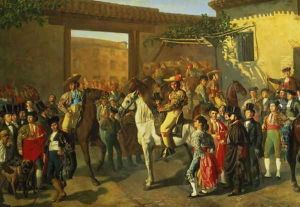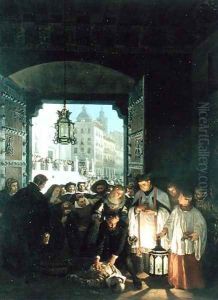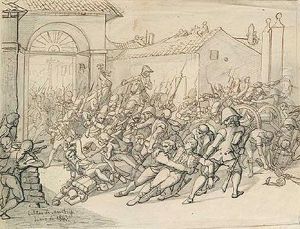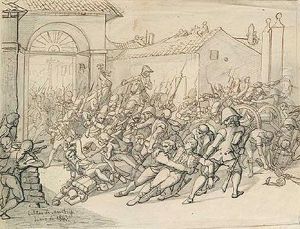Manuel Castellano Paintings
Manuel Castellano was a 19th-century Spanish painter, born in Madrid in 1826. Known for his genre and costumbrista (customs) paintings, Castellano was part of the Romantic movement that depicted everyday Spanish life, often with a nostalgic or picturesque lens. His works are characterized by their attention to detail and the use of bright colors.
Castellano trained under his uncle, José Ribelles, and at the Real Academia de Bellas Artes de San Fernando, which was the leading art institution in Spain at the time. His studies there would have included drawing, painting, sculpture, and engraving. Castellano was influenced by other Spanish artists of the Romantic period, such as his contemporary Federico de Madrazo.
Over the course of his career, Castellano became known for his scenes of traditional Spanish life, including festivals, markets, and domestic interiors. His paintings often included figures in traditional costumes and were executed with a keen eye for textiles and textures. Castellano's work was part of a larger 19th-century European interest in depicting national identities and the customs of everyday people.
Despite his contributions to Spanish art, Manuel Castellano was not as well-known internationally as some of his peers. Nevertheless, within Spain, he was recognized for his artistic talents and was appointed as a professor at the Real Academia de Bellas Artes de San Fernando, where he had once been a student. Through his teaching, he influenced subsequent generations of Spanish artists.
Manuel Castellano died in 1880, leaving behind a body of work that remains an important part of Spain's visual history, offering insight into the culture and society of his time. His paintings can be found in various Spanish museums, including the Museo del Prado in Madrid, where they continue to be appreciated for their portrayal of 19th-century Spain.



